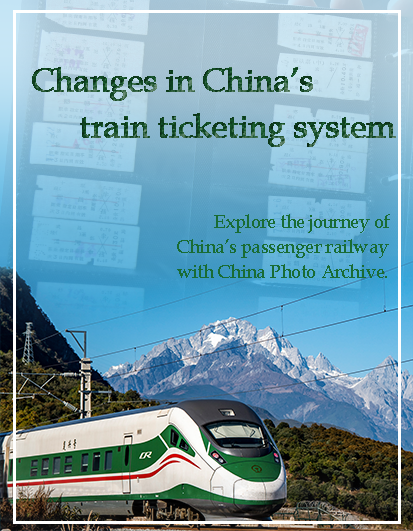
BEIJING, Dec. 26 (Xinhua) -- Hopping on a train to see the changing landscape of China and experience the country's diverse customs has become a popular holiday getaway. Without a printed ticket, the traveller can scan their face or ID card to check in within seconds, making the experience swift and smooth. So far, China's train tickets have gone through four generations of upgrading and transformation.
"Hardboard tickets", used from the 1940s till the 1990s, was the earlier generation of train tickets, which requires the conductor to manually annotate the trips' basic information.
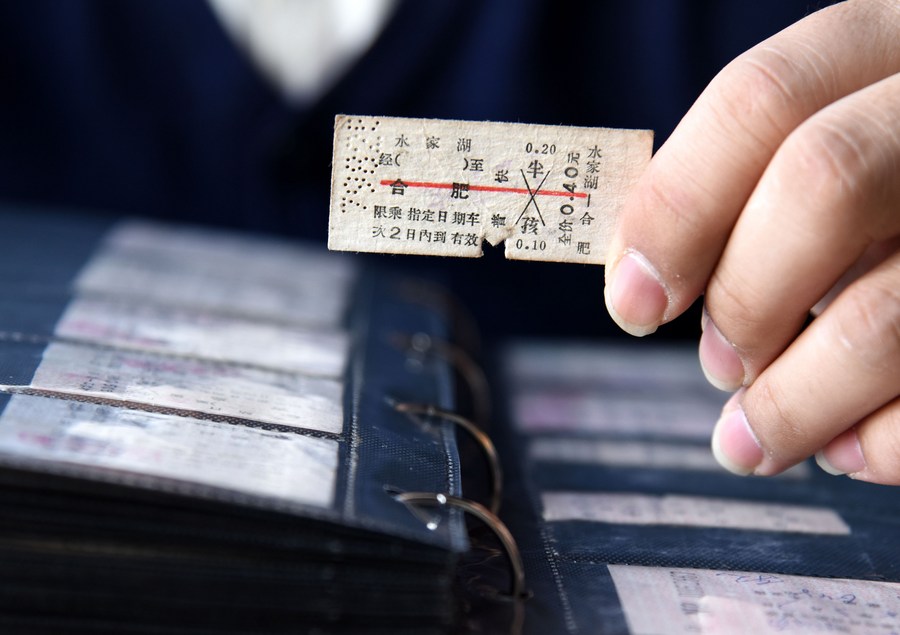
↑A railway enthusiast shows a 1979 Chinese train ticket in Qingdao, east China's Shandong Province, Jan. 25, 2019. (Xinhua/Li Ziheng)
The second-generation train ticket was launched in 1997, a soft paper ticket sold and printed with a computer system. Compared with the hardboard which required the ticket seller to print all information manually, the second generation sold much faster, cutting the wait time from minutes to seconds.
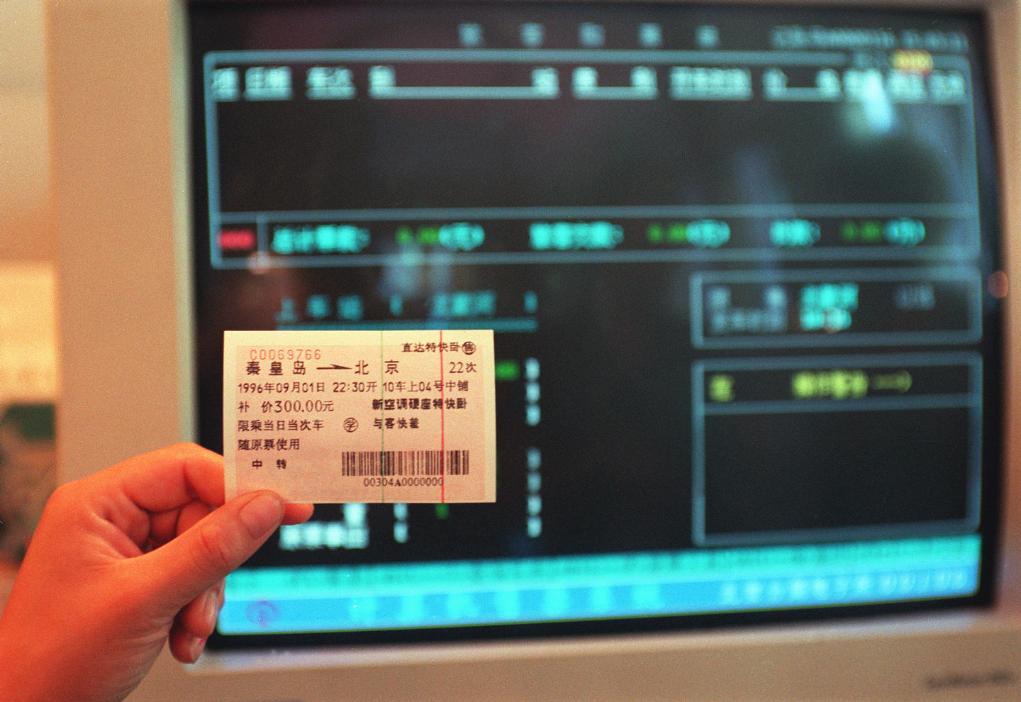
↑This photo taken in 1996 shows a Chinese soft paper train ticket. (Xinhua/Liu Zhongyang)
The third-generation magnetic train ticket, first introduced in 2007, can go through the automatic ticket checks.
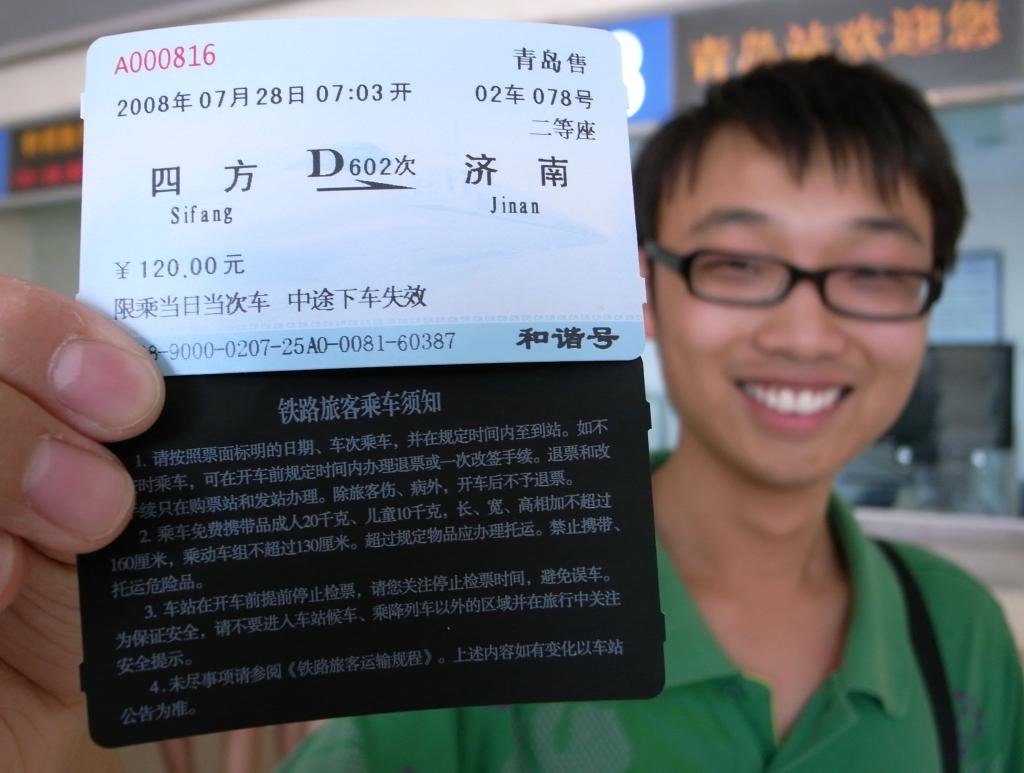
↑A passenger shows a magnetic train ticket in Qingdao, east China's Shandong Province, July 25, 2008. (Xinhua)
In November 2018, e-tickets were piloted at high-speed train stations in the island province of Hainan and had covered all high-speed, inter-city railways on the Chinese mainland by April 29, 2020, allowing passengers pass ticket checks with their ID cards and facial recognition instead of collecting tickets at the stations.
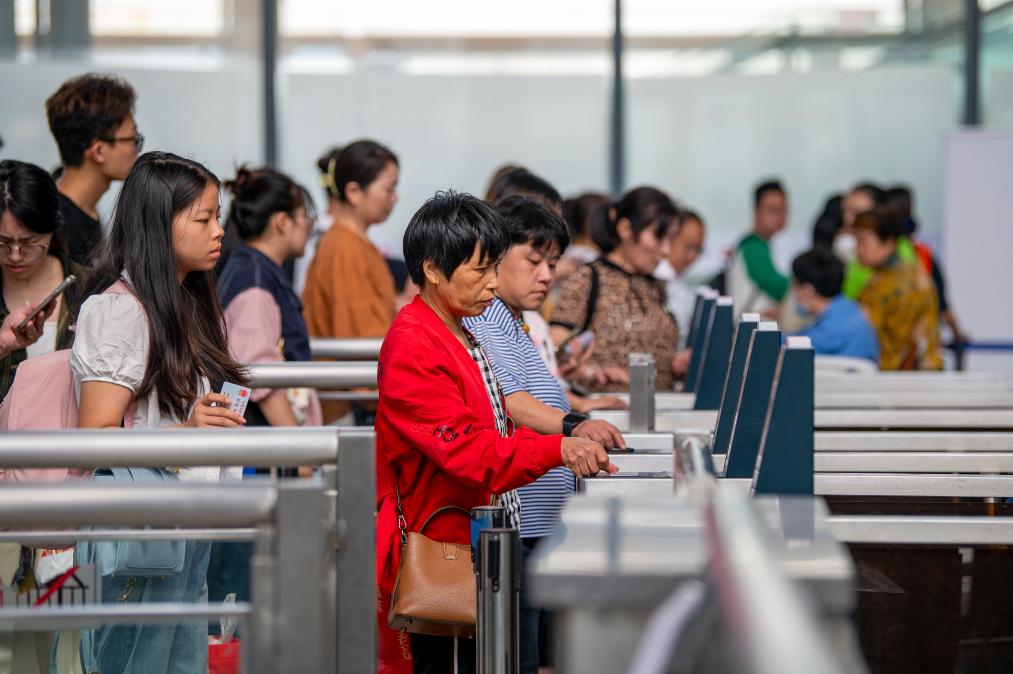
↑Passengers go through automatic ticket gates at Jinhua Railway Station in east China's Zhejiang Province, Oct. 5, 2023. (Photo by Hu Xiaofei/Xinhua)
Over the last decades, train tickets have undergone big transformation, evolving from small to large, and from physical to electronic. Significant changes have also been seen on the methods of selling and purchasing tickets.
During the "hardboard ticket" period, conductors utilized a date-stamping machine to imprint the date on the ticket, affixed the seat number, and calculated the price manually using an abacus. Fast forward in time, the use of computers enhanced the efficiency of train ticket sales and also curbed ticket fraud.
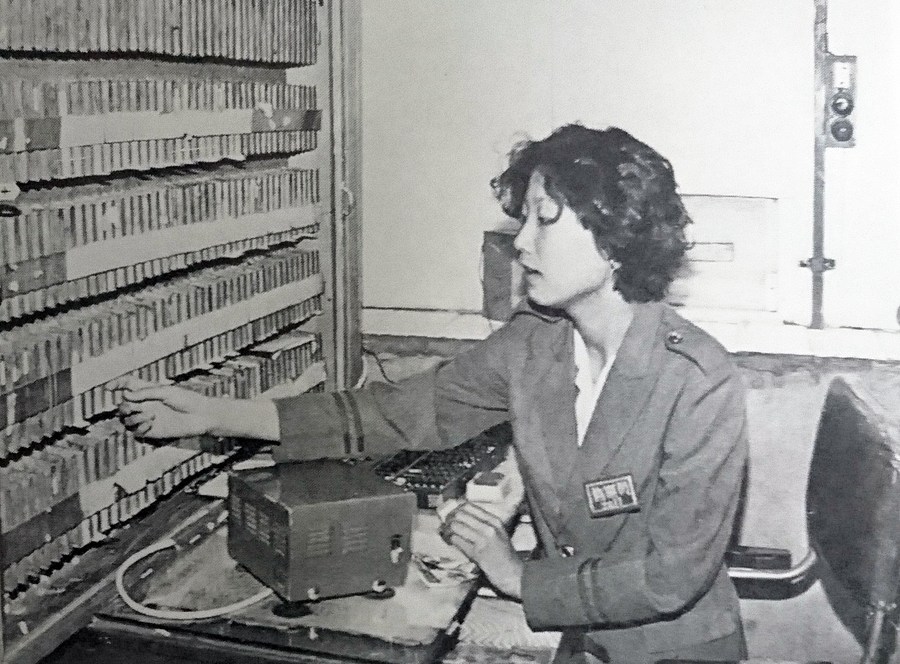
↑This photo taken in the 1950s shows a Beijing Railway Station conductor at work in Beijing, capital of China. (Photo provided by Beijing Railway Station)
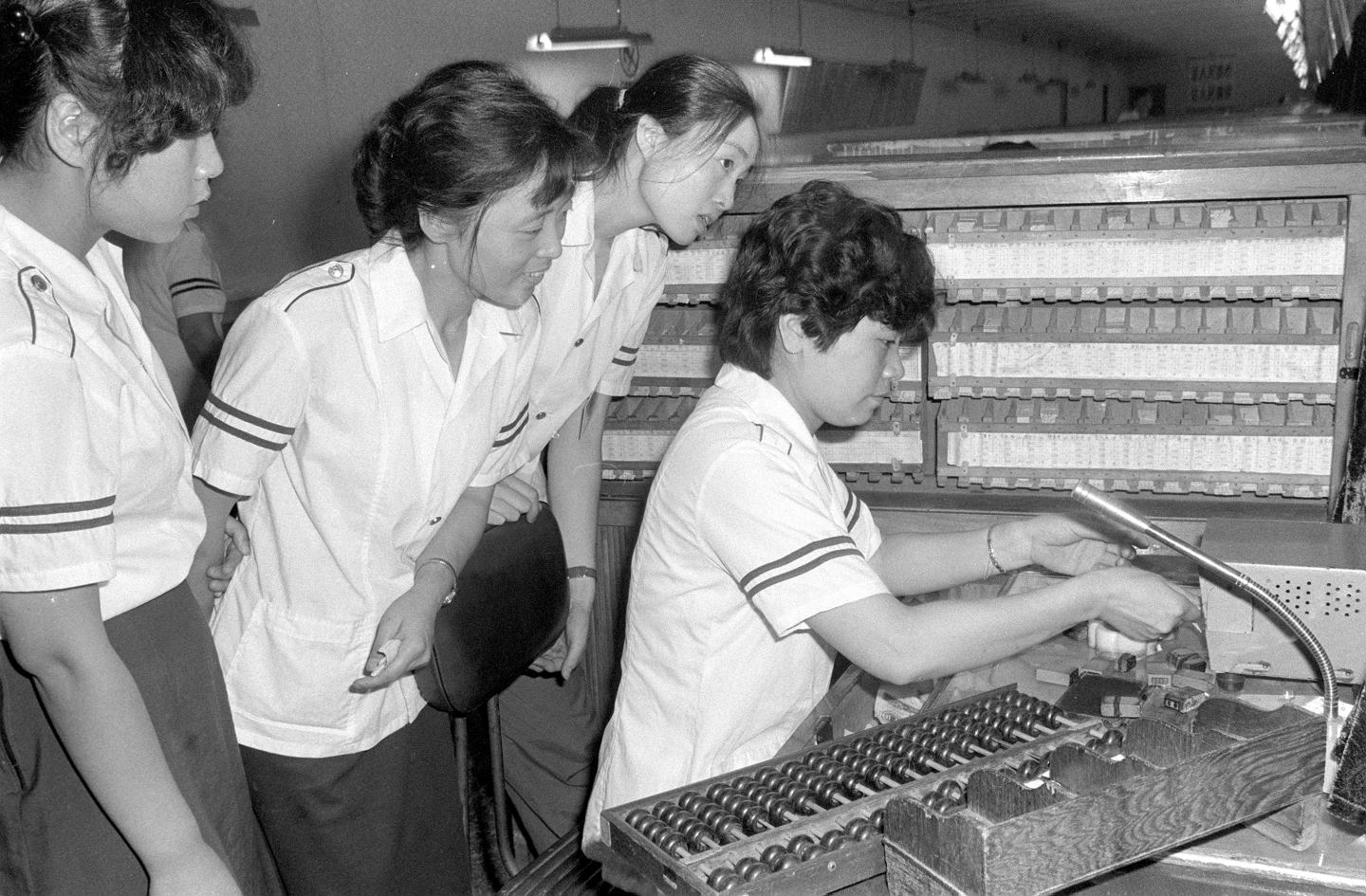
↑Conductors learn an efficient way of ticket-selling at Chengdu Railway Station in Chengdu, southwest China's Sichuan Province in 1986. (Xinhua/Wu Zuzheng)
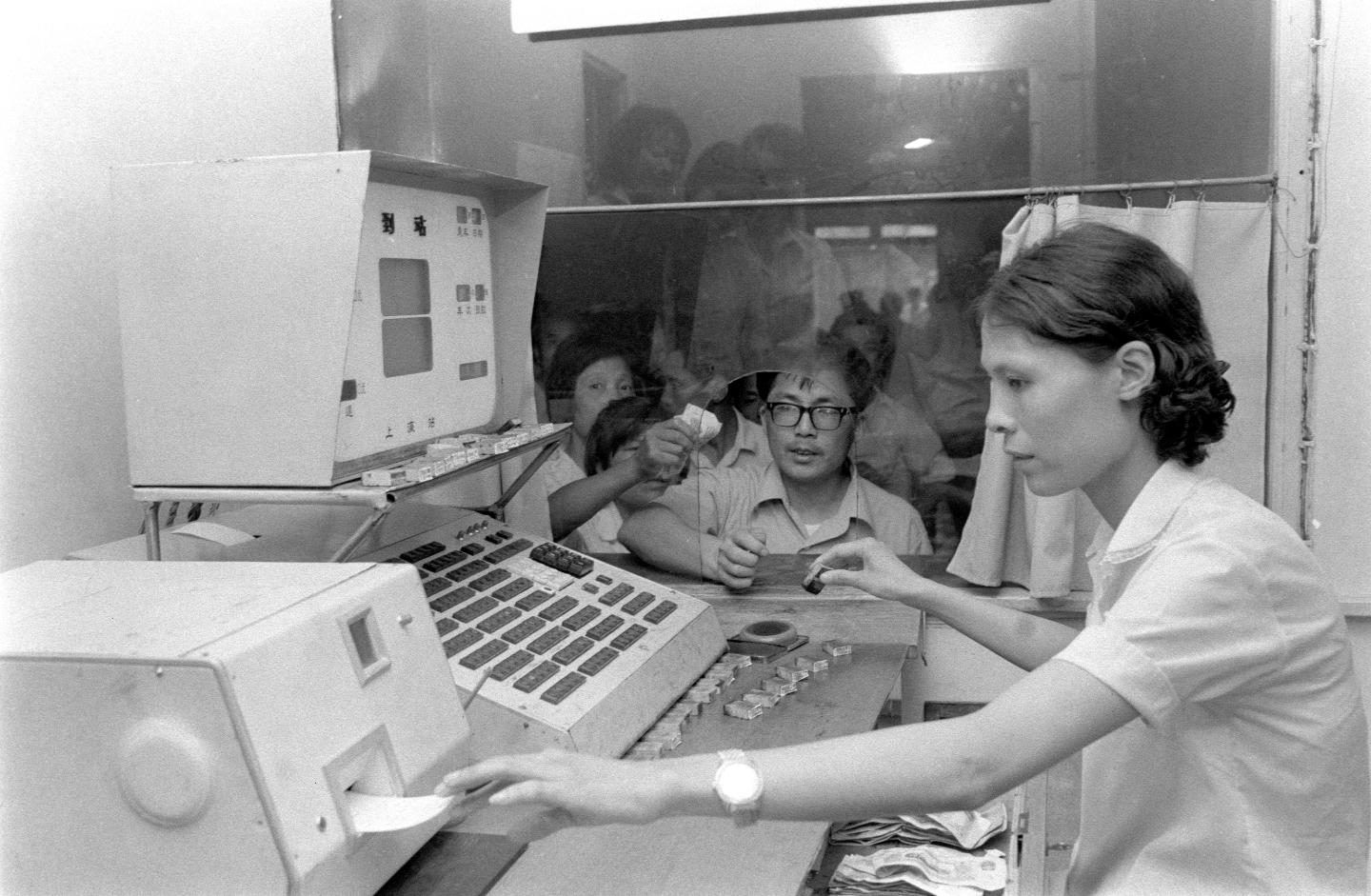
↑This photo taken in 1981 shows a conductor at Shanghai Railway Station selling tickets on a computerized ticket machine in Shanghai, east China. (Xinhua/Zhang Ping)

↑A conductor sells train tickets for passengers at a ticket office in Changzhou Railway Station, east China's Jiangsu province, Jan 1, 2023. (Photo by Shi Kang/Xinhua)
Purchasing tickets at the station's ticket window remains a safe and enduring method, standing the test of time. As society progresses, the increasing demand for travel has sparked diverse ticket-buying options: agency purchases, telephone bookings, SMS reservations, and online bookings. These evolving methods offer enhanced convenience, increasingly comprehensive ticket information, and continually improving anti-counterfeiting measures.
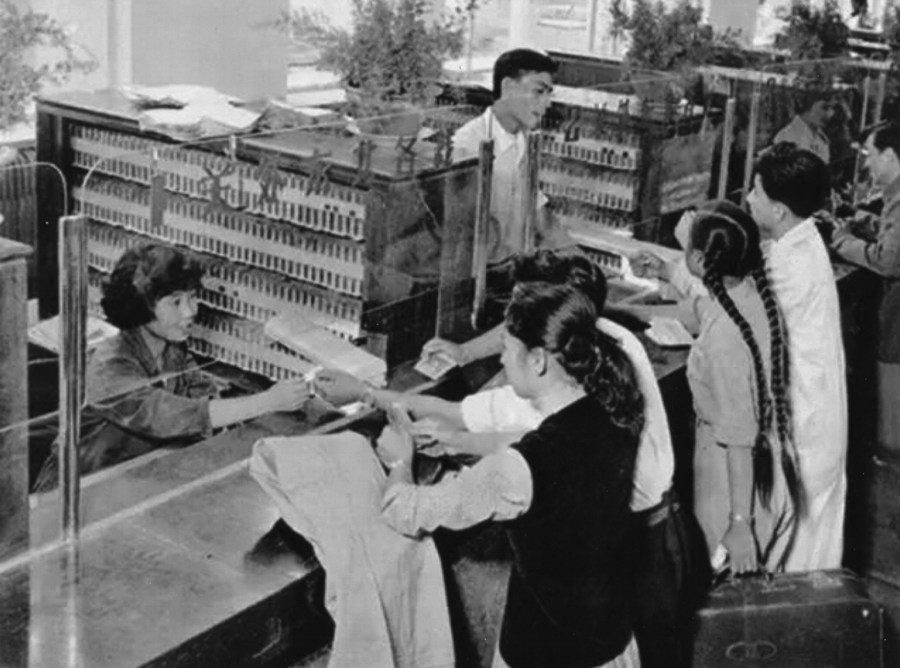
↑This photo taken in the 1950s shows people buying tickets at Beijing Railway Station in Beijing, capital of China. (Photo provided by Beijing Railway Station)
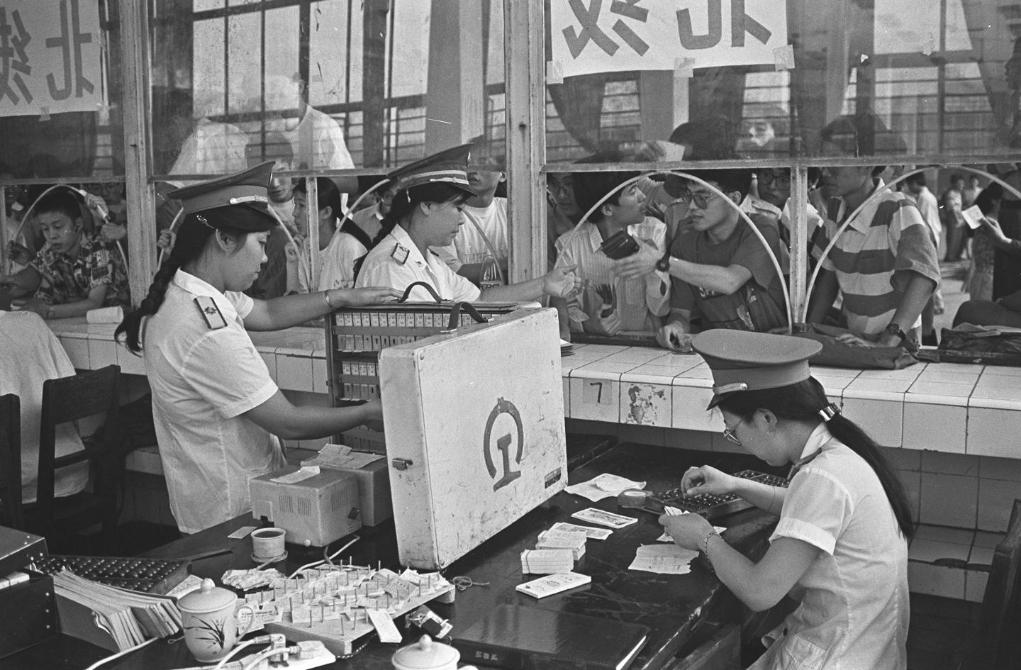
↑This photo taken in 1995 shows college students buying train tickets at a temporary ticket office set up in the canteen of Chengdu University of Electronic Science and Technology in Chengdu, southwest China's Sichuan Province. (Photo by Feng Jinsheng/Xinhua)
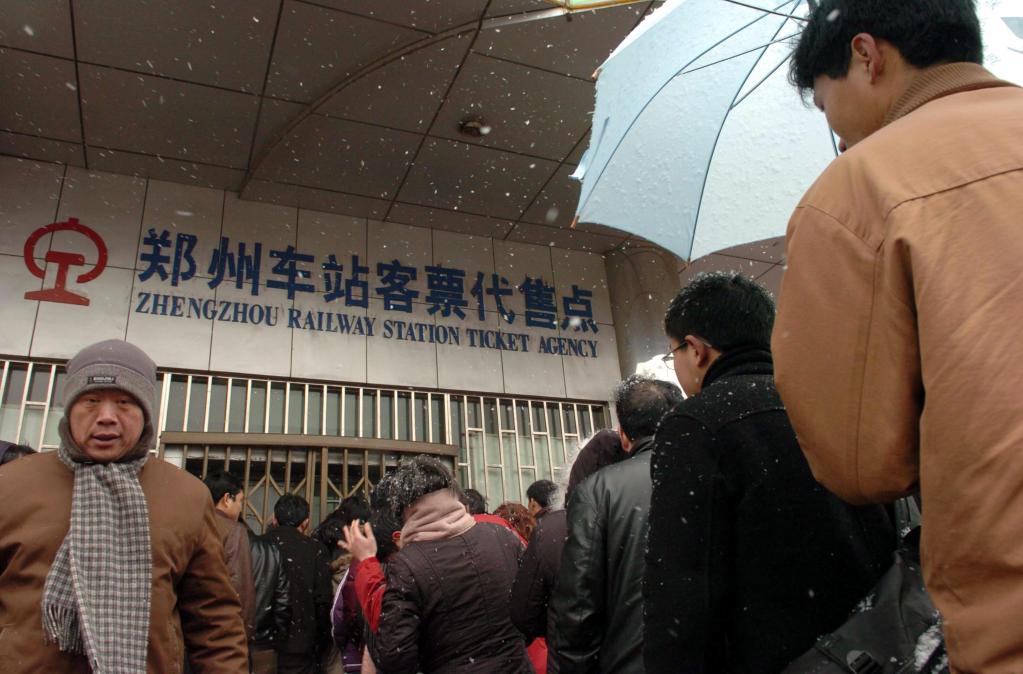
↑People line up to buy train tickets at Zhengzhou Railway Station Ticket Agency in Zhengzhou, central China's Henan Province, Feb. 2, 2005. (Xinhua/Zhu Xiang)
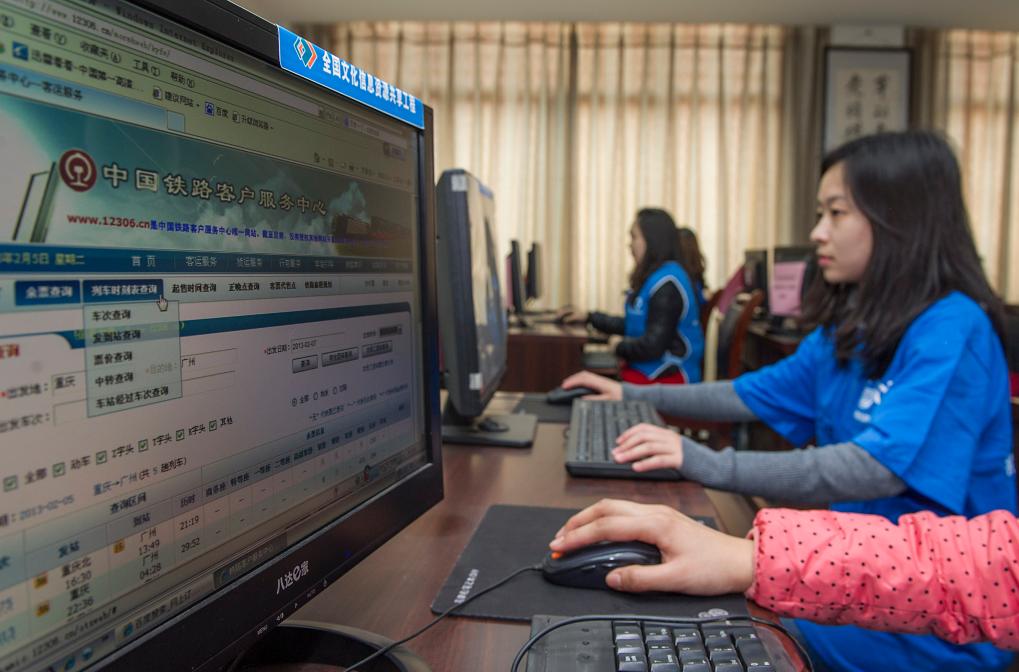
↑Volunteers purchase train tickets online for migrant workers in Chongqing, southwest China, Feb. 6, 2013. (Xinhua/Chen Cheng)
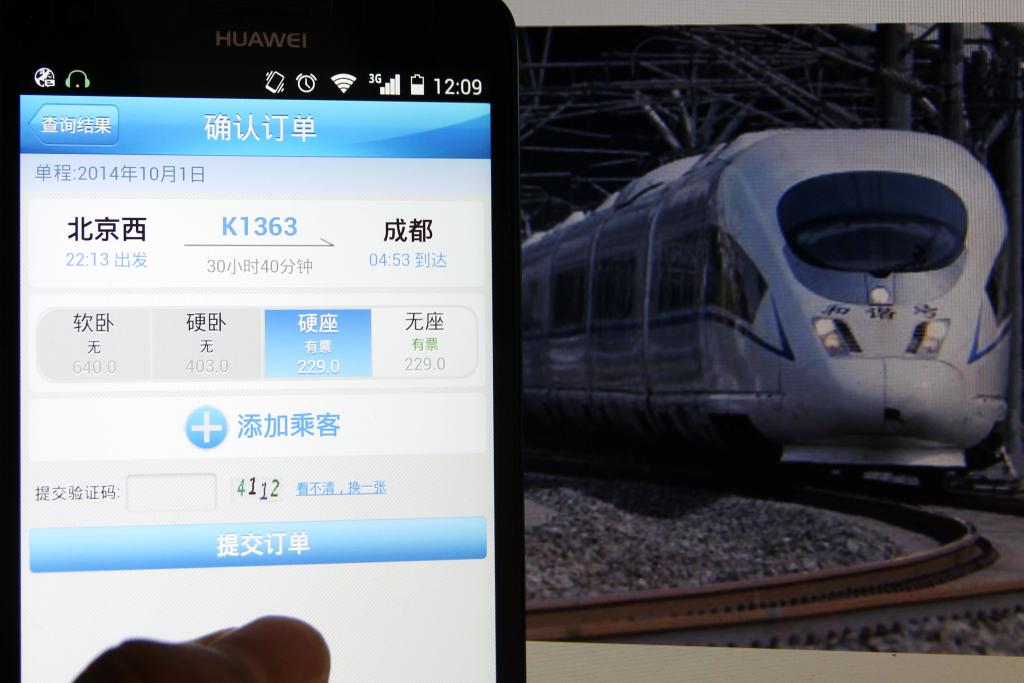
↑A citizen books a train ticket for the first day of National Day holiday through the ticket-booking app 12306 in Beijing, capital of China, Sept. 12, 2014. (Xinhua)
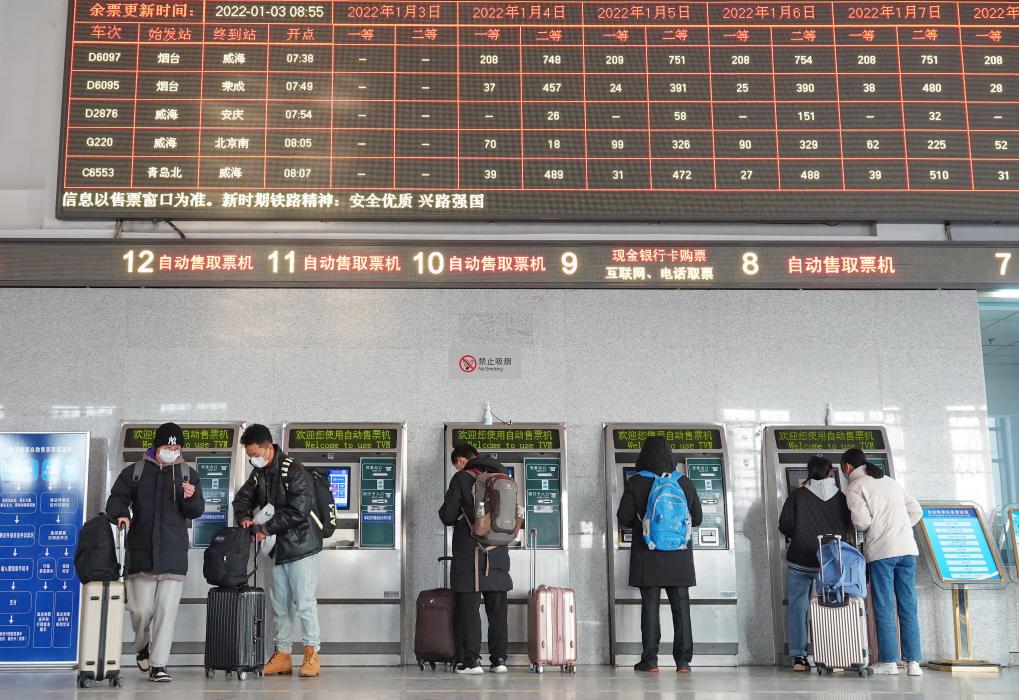 ↑Passengers use ticket vending machines to buy tickets at Nanjing Railway Station in Nanjing, east China's Jiangsu Province, Jan. 3, 2022. (Photo by Fang Dongxu/Xinhua)
↑Passengers use ticket vending machines to buy tickets at Nanjing Railway Station in Nanjing, east China's Jiangsu Province, Jan. 3, 2022. (Photo by Fang Dongxu/Xinhua)
According to the China State Railway Group Co., Ltd., from this year's January to November, a total of 3.56 billion railway passenger trips were made nationwide and the average daily number of passenger trains reached 9,638. Upgrades in China's train ticketing system have helped cope with the large volume. Enditem
Planner: Wang Jianhua
Coordinators: Tang Jingwei, Bao Feifei, Hou Dongtao
Editors: Wang Yijie, Meng Chenguang, Li Mangmang
Photographers: Hu Chao, Li Ziheng, Liu Zhongyang, Wu Zuzheng, Zhang Ping, Li Yonghong, Zhu Xiang, Chen Cheng, Fang Dongxu, Hu Xiaofei, Shi Kang, Feng Jinsheng
Visual Designer: Wang Yijie












